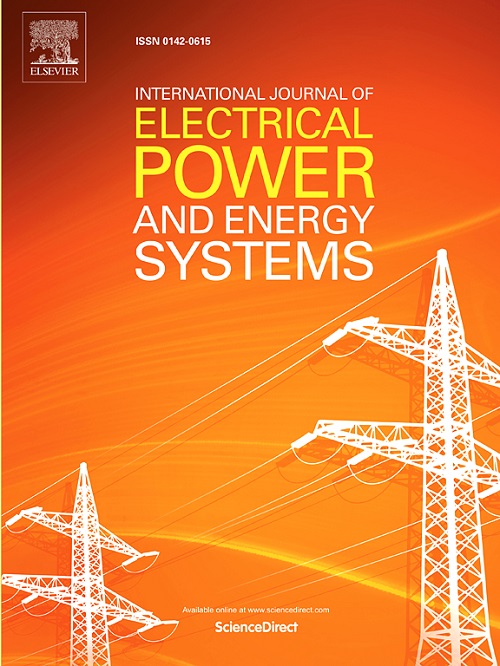Meteorological information calculation and power forecasting for regional distributed photovoltaic power based on information fusion and deep learning
IF 5
2区 工程技术
Q1 ENGINEERING, ELECTRICAL & ELECTRONIC
International Journal of Electrical Power & Energy Systems
Pub Date : 2025-09-29
DOI:10.1016/j.ijepes.2025.111189
引用次数: 0
Abstract
Distributed photovoltaic (DPV) generation is characterized by multiple sites, wide geographic distribution, and relatively low capacity, which pose significant challenges for accurate power forecasting. These challenges include meteorological information gaps, the excessive number of models required for individual site modeling, and difficulties in self-calibration of forecasting models. To address these issues, this study proposes a novel approach that utilizes regional DPV grid centers as virtual representative DPV sites. And by integrating information fusion and deep learning techniques, this method aims to achieve regional DPV meteorological information fusion and power forecasting. The approach capitalizes on the superior parallel computing capabilities and computational precision of the eXtreme Gradient Boosting(XGBOOST) model. It employs direct irradiance, diffuse irradiance, wind speed, wind direction, humidity, and historical power data as inputs of information fusion model for DPV sites’ solar radiation and ambient temperature. Subsequently, the DPV power forecasting model is constructed based on the Temporal Convolutional Network-Bidirectional Gated Recurrent Unit-Attention (TCN-BiGRU-Attention) architecture. Finally, SHapley Additive exPlanations (SHAP) is utilized to optimize feature variables. Validation using real-world data demonstrates that the optimized TCN-BiGRU-Attention model achieves a forecasting accuracy of 99.3 %, representing a 0.90 % improvement over traditional methods. The introduction of virtual representative PV sites enables the efficient construction of self-iterative models for DPV meteorological information and power forecasting, providing an effective solution for regional DPV power forecasting.
基于信息融合和深度学习的区域分布式光伏发电气象信息计算与功率预测
分布式光伏发电具有站点多、地理分布广、容量相对较低等特点,这给准确的电力预测带来了很大的挑战。这些挑战包括气象信息缺口、单个站点建模所需的模型数量过多以及预测模型自校准的困难。为了解决这些问题,本研究提出了一种利用区域DPV网格中心作为虚拟代表性DPV站点的新方法。该方法通过融合信息融合和深度学习技术,实现区域DPV气象信息融合和功率预测。该方法利用了极端梯度增强(XGBOOST)模型优越的并行计算能力和计算精度。将直接辐照度、漫射辐照度、风速、风向、湿度、历史功率等数据作为DPV站点太阳辐射与环境温度信息融合模型的输入。随后,基于时域卷积网络-双向门控循环单元注意(TCN-BiGRU-Attention)结构构建了DPV功率预测模型。最后,利用SHapley加性解释(SHAP)对特征变量进行优化。实际数据验证表明,优化后的TCN-BiGRU-Attention模型预测准确率达到99.3%,比传统方法提高0.90%。虚拟代表性光伏站点的引入,使DPV气象信息和功率预测的自迭代模型得以高效构建,为区域DPV功率预测提供了有效的解决方案。
本文章由计算机程序翻译,如有差异,请以英文原文为准。
求助全文
约1分钟内获得全文
求助全文
来源期刊
CiteScore
12.10
自引率
17.30%
发文量
1022
审稿时长
51 days
期刊介绍:
The journal covers theoretical developments in electrical power and energy systems and their applications. The coverage embraces: generation and network planning; reliability; long and short term operation; expert systems; neural networks; object oriented systems; system control centres; database and information systems; stock and parameter estimation; system security and adequacy; network theory, modelling and computation; small and large system dynamics; dynamic model identification; on-line control including load and switching control; protection; distribution systems; energy economics; impact of non-conventional systems; and man-machine interfaces.
As well as original research papers, the journal publishes short contributions, book reviews and conference reports. All papers are peer-reviewed by at least two referees.

 求助内容:
求助内容: 应助结果提醒方式:
应助结果提醒方式:


